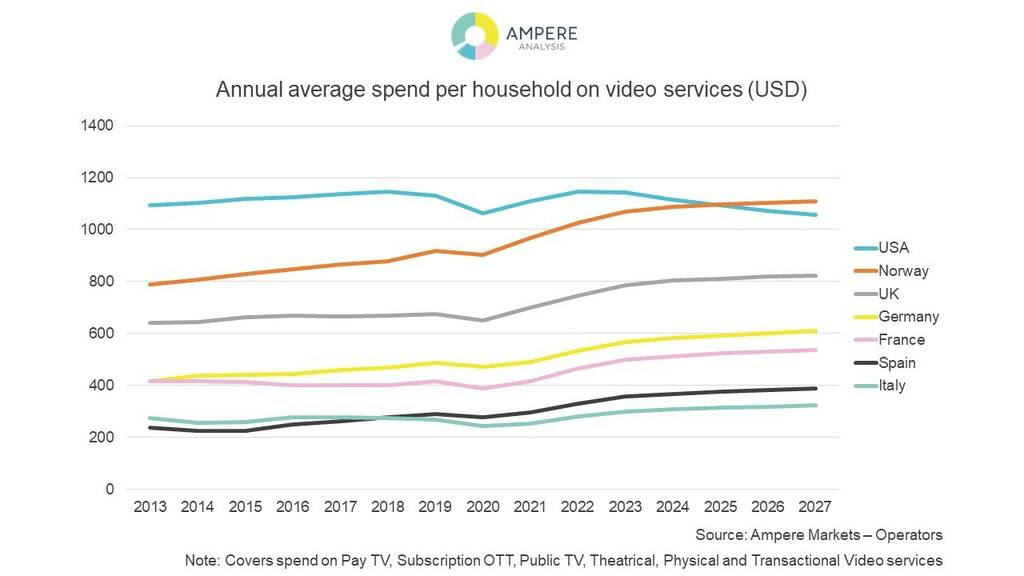SVoD Growth in the U.S. May Have Already Peaked, Ampere Says
SVoD market in Europe expected to grow 11% by 2027

LONDON—The average annual spend per U.S. household on video services is set to fall by 8% by 2027 according to the latest research from research firm Ampere Analysis, which adds that 2023 mark the point when per-household spending on subscription streaming (SVoD) services in the U.S. could no longer compensate for the continued decline in pay TV and spend on video begins to shrink.
Annual bills for video content peaked at $1,146 per household in the U.S. in 2022 with a post-pandemic bounce-back in theatrical expenditure and an 18% year-on-year increase in SVoD outlay to $374 per household per year.
This year, however, SVoD revenue growth in the U.S. will slow, hindered by market maturity and economic pressures. The added impact of cord-cutting will see yearly pay TV investment per average household fall below $650 for the first time since 2006. The result is likely to be the beginning of a slow decline in annual average household expenditure on TV, Ampere said.

Meanwhile, in Western Europe, where the pay TV market is stable, increasing demand for SVoD services will drive an 11% increase in household expenditure on video by 2027. In fact, Norway’s per household spend on video is set to overtake the U.S. in 2025, the first Western market to do so, according to Ampere. Norwegian homeowners will each be spending more than $50 more on video than U.S. households by 2027, and almost $300 more than the average U.K. home, and substantially more than those in Germany, France, Spain and Italy.
“Spend on video has finally hit its limit for US households, said Maria Dunleavey, Senior Analyst at Ampere Analysis. “As the U.S. subscription OTT market edges closer to saturation point and demand for pay TV continues to fall, annual spend per household on video services has tipped into decline. By 2027, unless streaming services can sustain significant price inflation, U.S. households will be investing almost $90 less per year on video services.
“Recent moves from TV groups to focus on hybrid tiers and free ad-supported video services represent one approach to compensating for this downward pressure,” Dunleavey added. “By contrast, in Western Europe, pay TV expenditure is more stable and the expansion of SVoD continues to drive spend on video. For U.S. groups, capitalizing on this international growth is increasingly key given the pressures on domestic income.”
Get the TV Tech Newsletter
The professional video industry's #1 source for news, trends and product and tech information. Sign up below.
